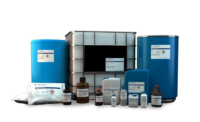Why Safety Adds More Business Value than You Think

Rapid advances in Industrial Internet of Things (IIoT) technology is bringing connected devices, systems and people together to deliver actionable results and improve safety, productivity, sustainability, efficiency and reliability. Coupled with the emergence of IIoT is a continuous evolution of standards to help original equipment manufacturers (OEMs) build safer machines and likewise, help machine users and manufacturers improve the ease of maintenance while minimizing operational downtime. Today, machine users and manufacturers not only want to ensure new and existing machines are safe, but that they are connected for diagnostics, flexible in design, reliable and ready for now as well as the future.
Current safety procedures and capabilities often mean machine downtime and costly production stops. While operations in the United States are highly modernized, other countries are well ahead in the direction for and implementation of smart machines. While the European market has historically led the industry in safe machines, strong developments in North America have occurred in the past 10 years. As demand for embedded safety systems in North America continues to grow, more machines will evolve to include increased functionality, simplified designs and predictive maintenance capabilities. Enhanced functionality means industry players will increasingly experience improved machine uptime, maintenance and productivity throughout their production chains and enterprises.
Today’s Safety Challenges
With the introduction of the machinery directive in Europe, there has been a continuous evolution of standards to help OEMs build safe machines, and more C-type standards focused on specific machines and parts. Countries outside of Europe have created their own machinery directives. While this evolution brings huge advantages to machine operators, machine manufacturers must determine how to implement safety properly, while meeting directive requirements and understanding local rules where machinery will be used or sold.
Now, manufacturers have to add a larger scope of safety devices and design into their machinery. While this process may be smooth for large companies, smaller companies may have limited resources and lack the right skill sets to follow the evolution of requirements for safe machine design.
To compete in today’s increasingly competitive environment, the industry needs to shift its safety strategy, meaning safety should no longer be an add-on, but as a key component for adding value to a business. With a plethora of connected devices available today, it is more important than ever for industrial companies to implement smart machines that have safety and security built into their fundamental design, improving the safety for industrial operators while minimizing the security risk of increased networking.
Key Considerations for Tackling Safety
In the past, machines typically had large physical barriers surrounding them to prevent operators from interacting with dangerous parts of equipment. Today, operators want to be able to interact with machines without stopping production. To ensure machines are safe but don’t require downtime for maintenance, they should be designed with safety functions embedded on the board so machines can be brought to lower speeds so operators can interact with them without halting production. This approach not only saves maintenance time and decreases downtime, but improves the efficiency of an entire operation.
The evolution of embedded safety means machines can be designed with standard architecture and optional machine parts, which provides flexibility to simplify their production and engineering efforts. For machine builders, this approach means they can focus on building one flexible safety concept and reduce time to market for selling their machines. Simplicity in design is key, but a broad range of flexible options that include dedicated safety components, such as laser scanners and safety cameras, together with automation components such as safety controllers, programmable logic controllers (PLCs) and safety drives should be considered in any project. The mixed use of safety components and controllers will allow machine builders to fit the solution to specific end user application requirements, helping to improve overall performance and productivity.
With embedded safety components, controllers and newly added communication capabilities, smart machines can use sensors and intrinsic knowledge to monitor components and environmental conditions. This plethora of information can be sent to operators, OEMs and end users, meaning processes are optimized to become more reliable, flexible and efficient. Utilizing analytics, shop floor equipment is connected to an IT infrastructure, bringing maintenance to a new level. OEMs can not only avoid component failure, damage and downtime, but schedule maintenance ahead of time to minimize the impact on production and ultimately avoid unsafe conditions.
Today, safety has become a core component of a successful, modern factory. To stay competitive, manufacturers must shift their safety strategies to ensure people across the entire enterprise view it as a way to protect the health of people and assets alike. For safety to make a positive business impact, enterprises must realize the importance of embedded safety to help monitor business functions and ensure operations run efficiently. While the boundaries of technology depend on the end user, they must take steps to implement safety devices that protect assets and people to ensure enterprises move into a safer machine world.
Looking for a reprint of this article?
From high-res PDFs to custom plaques, order your copy today!






